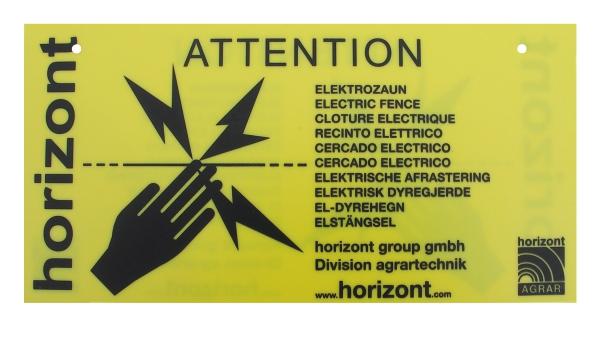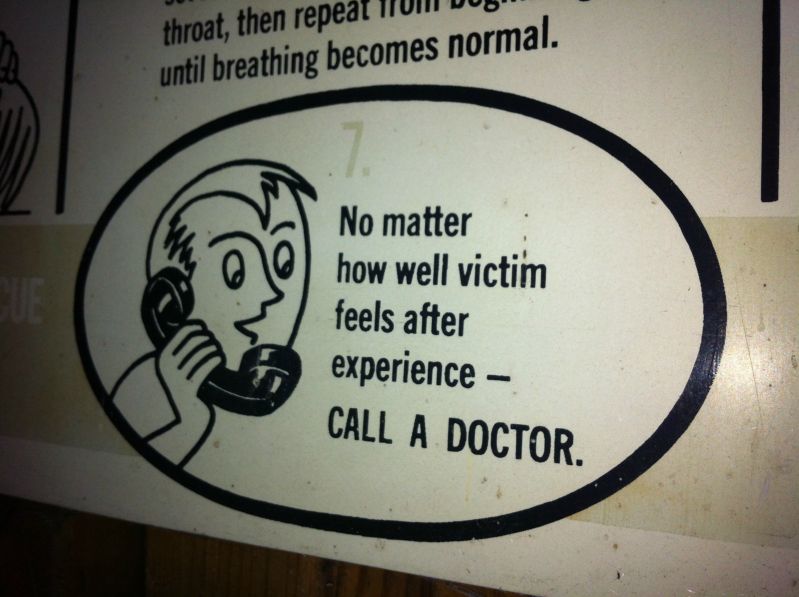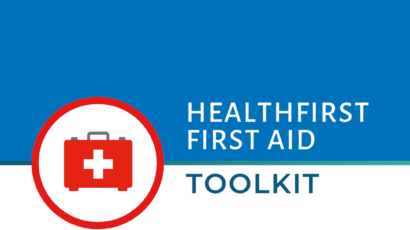Electrical shocks: when should you worry?
We are all surrounded by electrical power – it allows us to have light, warmth, hot food, telephones, hairdryers, and even keeps farm animals in the right places. It is also powering the device on which I’m writing now and on which you are reading! We all know just how extraordinarily debilitating it is for us when there is a power cut.
However, as with most inventions, electrical power can also be dangerous. Electrical shocks are relatively common, usually accidental and mostly preventable. We should all be aware of the risks and understand what to do should one occur.
How does electricity cause damage to the body?
- Electricity running through the body may cause cells to dysfunction. An example would be the cells of the heart, which in extreme cases, could result in the heart stopping.
- Electrical energy is converted into heat energy in the body. This may cause burns on the skin, often in two sites – where the electricity has entered the body and again where it exits the body. Superficial burns on the skin often mean that there are deeper and more severe burns to the tissues and organs ‘hidden’ inside the body, for example, causing damage to the nerves, muscles, organs etc. Flame burns can also occur when the electricity ignites materials near the person e.g. clothing, bedding, dry grass/bushes, plastics etc.
- People can fall, get thrown or suffer strong muscle contractions during or after the electrical shock, resulting in physical injuries. Examples include cuts, bruises, broken bones, head injuries and dislocated joints.
- Lightning can generate shock waves in the air, of up to 20 atmospheres (similar to a bomb) which are then transmitted through the body. This can cause mechanical trauma to eardrums, blood vessels and other organs inside the body.
What about electric fences in the countryside?
For over 100 years around the world electric fences have been used, initially for security and border control during wars. The technology was adapted in the 1930s for use in agriculture to keep farmed animals inside their fields and pens, whilst keeping out wild animals (and people). Electric fences are also still used to protect commercial, military, government and aeronautical buildings and grounds.
All electric fences should have clear signs at regular intervals along their length, warning of their presence.
An electric fence consists of posts (made of wood or insulated metal) with strong wire(s) running between the posts. There is usually a component called a power energizer that converts standard electricity (e.g. 220V AC in Switzerland) into an intermittent pulse of high voltage electricity. This pulse then flows along the whole length of the wire about once a second. Sometimes you (or an animal) can hear the quiet buzz or click when the pulse occurs. If nothing else is touching the electric fence, the electricity then flows down into the ground via a metal rod sunk into the earth.
According to 2010 EU law, the electrical energy of each pulse should not exceed 5 joules at 50 ohms of resistance. This represents a very low output power, equivalent to a dim household light bulb.
What happens if a person or animal touches the electrified wire of the fence?
If this happens whilst they are also in contact with the earth i.e. with their feet or hooves on the ground – then the electricity will preferentially travel through their body instead of via the metal rod. The person or animal will feel a rapid electrical shock, which may range from a small buzz to a very painful jolt. The electricity is discharged in less than one second and is usually DC (direct current). The severity of the shock depends on a number of factors:
- The voltage of the electricity.
- The electrical energy of the pulse
- The area of contact between the fence wire and the skin.
- Whether the skin and/or wire was wet.
- Which route the electricity took through the body.
If there is a chain of two or more people in contact with the fence, for example, a child who is holding the hand of an adult who then touches a fence, the electrical shock will pass through both people.
A shock from an electric fence should be no more than an uncomfortable deterrent to an escaping animal or trespassing person. However, we can never be sure of the reliability of the equipment and set-up of the fence, or the technical standards adhered to in other countries.
In reality, you may not know the precise scientific characteristics of an electrical shock that has just occurred but remember that all electric shocks can result in injuries and sometimes death and therefore must be taken seriously.
The First Aid Protocol for assessing and treating an electrically injured person, whilst keeping yourself safe.
What should you do if someone gets an electrical shock?
1. TURN OFF THE ELECTRICITY OR BREAK THE ELECTRICAL CIRCUIT
Remember: if you rush in to help someone who is still in contact with a flowing electrical current, you may receive an electrical shock too. Think – your own safety first!
In a domestic situation
(e.g. home, school) switch off the electricity at the mains supply. There is usually a big switch near the fuse box or similar place. Do you know where the mains switch is in your house, your school, your place of work?
If you can’t turn off the electricity, you will need to safely break the circuit of electricity flow if possible:
First, stand on a non-metal object, e.g. a couple of telephone directories or thick books, a wooden box.
Then push/pull the person away from the electrical source using a high resistance object, e.g. a wooden chair, a wooden broom, a thick rope.
After a shock from an electric fence, the person is usually no longer in contact with the DC current – they will often have let go due to the pain or have been thrown clear. Nevertheless, think about what items there are in the countryside or in your backpack that you could use to break the circuit safely if needed.
In a high voltage situation
(e.g. overhead power lines, live train rails), always stay at least 18 metres (20 yards) away from the shocked person. This is because such high voltage electricity can jump or ‘arc’ to you if you are any closer.
Call 144/112 and wait for an official to turn off and isolate the electricity. Only the emergency services should approach the injured person.
2. CHECK FOR A RESPONSE AND WHETHER THEY ARE BREATHING NORMALLY (once it is safe to approach the person)
A – the person is unresponsive and not breathing:
- Immediately start Cardio-Pulmonary Resuscitation (CPR), regardless of any other injury including burns.
- Call 144/112 yourself or ask a bystander to call.
B – the person is unresponsive but still breathing:
- Put them into the Recovery Position and monitor their breathing.
- Call 144/112.
- If there is a burn, treat this as you would any other burn with the ‘6 C’s:
- Stay Calm. Cool the burn with water. Remove the Clothing around the burn. Cover the area with a sterile, non-fluffy dressing. Comfort the person with your voice, eye contact and gentle touch. Wait for the ambulance to transfer them to the Clinic.
C – the person is responsive and breathing normally:
- Look for and treat any burn with the ‘6 C’s’ as above. There may be an entry and exit burn on the skin, remembering that they are likely to have worse ‘hidden’ burns inside their body too that will require rapid medical attention.
- Call 144/112.
If the shock seems to have been mild, they don’t appear to have any burns on the skin and you are not sure about the need for a trip to the hospital, at least phone the emergency services on 144/112 to get some specific advice on the situation – the age of the person, type of shock, general symptoms etc.
What will the doctors be checking for at the hospital?
- The heart – especially for those people who have had cardiac problems in the past or who are having any chest pain or difficulty breathing. An ECG (electrocardiogram) will monitor the rhythm of the heart.
- The skin – for blistering or burns, especially in skin creases, around the joints, inside the mouth etc.
- The nervous system – for any signs of a head injury or damage to the sensory or motor nerves.
- The eyes and ears – looking at the retina at the back of the eye and the ear drums for any injury.
- The musculoskeletal system – examining for any bruising, swelling or fractures.
- The urine and blood – to check for any kidney damage and abnormal electrolyte (salts) concentrations.
- The baby and placenta in a pregnant woman.
The person can go home when the checks are complete. Alternatively, they may be required to stay in hospital for several hours, or sometimes days, to be sure that the body has recovered completely.
Electricity – how much should I worry?
Even as far back as the ancient Egyptians, people have been aware of the presence and risks of electricity. In 2750 BC, texts were written about shocks that could be received from electric fish in the Nile.
Bringing it right up to date, the Large Hadron Collider at CERN would just be a boring empty circular tube if there were no amps and volts to fire it. Yes, electricity has its risks but hopefully this article will help you to not only understand the dangers but also to understand what to do in the case of an electrical shock and how to keep safe. One of the most important things you can do is keep your first aid skills up to date by attending one of HealthFirst’s emergency first aid courses.
Disclaimer: Click here to read our full disclaimer.










